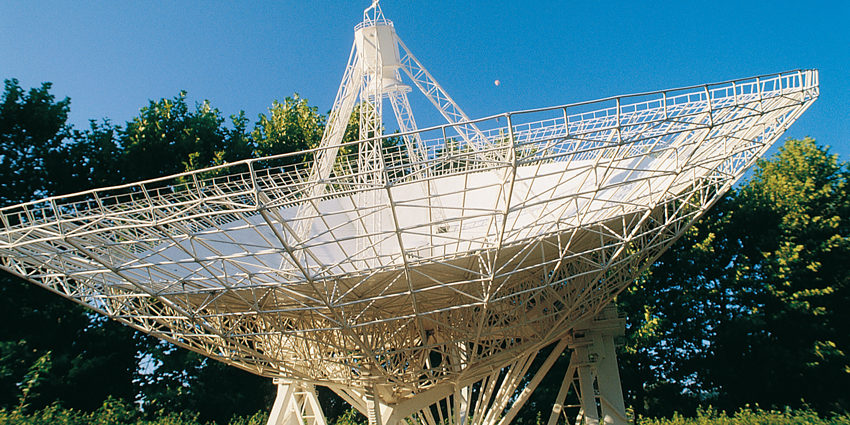The fully steerable radio telescope operated by the Max Planck Institute for Radio Astronomy is located in Bad Münstereifel-Effelsberg and is one of the largest and most powerful of its kind in the world. Radio astronomy can cope with much greater distances than optical astronomy and has developed rapidly since 1945. Objects observed are pulsars, cold interstellar gas and nebulae, the centre of the Galaxy, material jets from black holes, and cores of distant galaxies. The telescope, which is 10 times larger than any other radio telescope, can receive radio waves from the edge of the universe (approx. 15 – 18 thousand million light years away). It has a diameter of 100 m and the surface of the dish is around 7,600 m2, or the area of a football field. Countless scientists from Germany and abroad have worked here since the mighty telescope went into operation in 1972, achieving unimaginable research results. The model was difficult enough to build so that it is hard to imagine what incredible engineering skills went into building the original.
Height: 4.40 m
Diameter: 4 m
Weight of steel construction: 900 kg
Materials: steel, aluminium
Time taken: 6 school years
Model makers: HTL Klagenfurt (1989)

